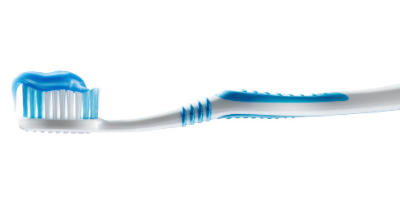How to Remove Fluoride in Drinking Water?
Is Fluoridated Drinking Water Safe?
 Are you concerned about fluoride in your drinking water? Numerous studies have shown that fluoridated water at recommended levels is effective in preventing tooth decay and has minimal adverse health effects. However, excessive fluoride intake can lead to dental fluorosis (mottling of tooth enamel), brittle bones and thyroid issues.
Are you concerned about fluoride in your drinking water? Numerous studies have shown that fluoridated water at recommended levels is effective in preventing tooth decay and has minimal adverse health effects. However, excessive fluoride intake can lead to dental fluorosis (mottling of tooth enamel), brittle bones and thyroid issues.
We provide a comprehensive how-to guide to understanding fluoride, its effects on water quality, and the methods available to effectively remove it, so you can make an informed choice for healthier and safer drinking water at home.
Why is Fluoride in Drinking Water?
For more than 70 years, fluoride has been added to America’s public water supply. Fluoridation began after scientists found that people had fewer cavities if they lived in an area where fluoride was naturally more prevalent in the water.
Today, the American Dental Association (ADA) continues to advocate for fluoridation, arguing that it is helpful to the American public in preventing tooth decay and creating stronger teeth.
In the U.S., 67% of homes receive water that has been fluoridated.
How to Remove Fluoride from Drinking Water?
Because of the health risks associated with fluoride, many households are seeking for a way to reduce or remove fluoride from drinking water.
Reverse Osmosis (RO) water filtration is one of the most effective ways to remove fluoride from water.
Depending on the system in stalled, a Reverse Osmosis (RO) system can remove 85-92% of fluoride in water.
Is Fluoride Bad For You? The Fluoride Debate
Even though fluoride in water has benefits, not everyone wants to drink it. What started out with one water supplier adding fluoride to water in the 1940s, has increased to 67 percent of homes in the U.S. now receive fluoridated water.
Fluoride in drinking water has become a highly debated topic, and many people believe the potential health risks outweigh the benefits fluoride provides.
Effects of Fluoride in Water
No Dose Control
Once added to the water supply, there is no way to control the dose of fluoride--same does to everyone regardless of weight, health, age, and need.
Too Much Already
Many children already exceed the daily fluoride intake recommendations from toothpaste alone.
Environmental Impact
Fluoride may be hurting the environment since 99% of our water supply is not used for drinking but is flushed down the drain.
Teeth Staining
Fluoride can cause teeth stains or patches of white and yellow known as dental fluorosis.
Brittle Bones
Fluoride accumulation may make bones brittle and prone to fracture.
Thyroid Impact
Fluoride may impact thyroid function for some individuals. One study shows water fluoridation increases risk of hypothyroidism.
Toxic Properties
Fluoride is known to have toxic properties even at low doses.
How Do Reverse Osmosis Filters Remove Fluoride?
A reverse osmosis filtration system is a simple solution to get fluoride out of drinking water.
Reverse Osmosis technology uses household water pressure to push tap water through the filtration process. The water passes through a semipermeable membrane, as well as additional filters such as sediment or carbon filters (many RO units incorporate a 4-stage process for optimal water quality). Learn more about how reverse osmosis works.
RO systems are installed as under-sink or countertop filters to provide clean drinking water at the kitchen tap.
RO filtration not only improves the taste, smell and appearance of drinking water, but also effectively reduces PFOS, fluoride, chlorine, pesticides, lead, and dozens of other contaminants.
Top-Selling Reverse Osmosis Drinking Water Systems
Fluoride FAQs
Does Boiling Water Remove Fluoride?
Unlike chlorine that is easily removed from water by boiling, fluoride does not evaporate out. In fact, as water boils it decreases, thus leaving you with a higher concentration of fluoride in your drinking water.
How to Remove Fluoride from Water?
Reverse Osmosis water filters can remove 85-92% of fluoride in water. In addition to fluoride reduction, RO filtration can also remove pesticides, chlorine, lead, and dozens of other contaminants.
How Can I Remove Fluoride from Water Cheaply?
Popular pitcher filters that use activated carbon to remove contaminants are inexpensive but cannot remove fluoride.
Distillation, where water is boiled and decondensed, is one way to remove fluoride from water. But this process is slow and takes a lot of energy--making it a less popular method.
Possibly the least expensive method to remove fluoride from water is to install a Reverse Osmosis drinking water system under your kitchen sink. These systems start at around $300 and are generally economical to upkeep with annual filter changes.
Are Water Filters that Remove Fluoride Expensive?
Reverse osmosis has become increasingly popular because it is a safe, cost-effective, easy-to-maintain water filtration system. A family of four can have fresh, great-tasting RO-filtered water each day for just pennies per gallon. A new reverse osmosis system typically costs about $300.
The footprint of a residential RO system is small and is typically installed under a kitchen sink. The system can also be connected to your refrigerator and ice machine.
You might also consider installing a UV light water purifier to protect all the water coming into your home from microbiological contaminants such as viruses and bacteria.
 If you have any questions about any of these systems, please call our customer support team at (877) 377-9876 Monday-Friday, 8 am to 5 pm Central Time (U.S.).
If you have any questions about any of these systems, please call our customer support team at (877) 377-9876 Monday-Friday, 8 am to 5 pm Central Time (U.S.).
ESPWaterProducts.com offers top-quality water filtration systems at affordable prices. We’ve been selling water filtration equipment since 2003 and this longevity in the industry has led us to the very best reverse osmosis systems on the market. When you purchase from ESPWaterProducts.com, you can trust that your system will be manufactured with the highest-quality components, has an outstanding warranty, and has the very highest ratings for customer satisfaction.





